Quick Reference
Oct. 1937
East Poultney, Vt.
Oil on Canvas
Landscape
Churches, Buildings
27" x 30"
Southern Vermont Artists, 1938
Unknown
NA
Related Links
- See also the...
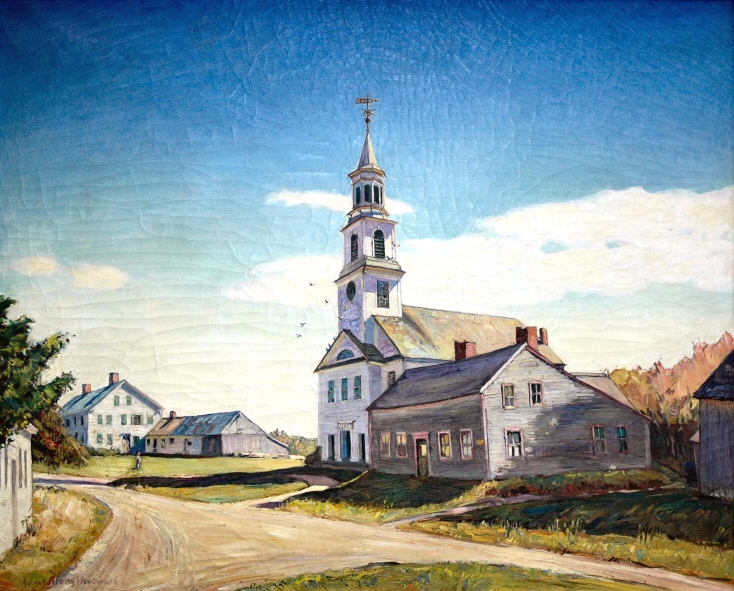 Churches & Cemetery Gallery to view related pieces.
Churches & Cemetery Gallery to view related pieces.
- See also the...
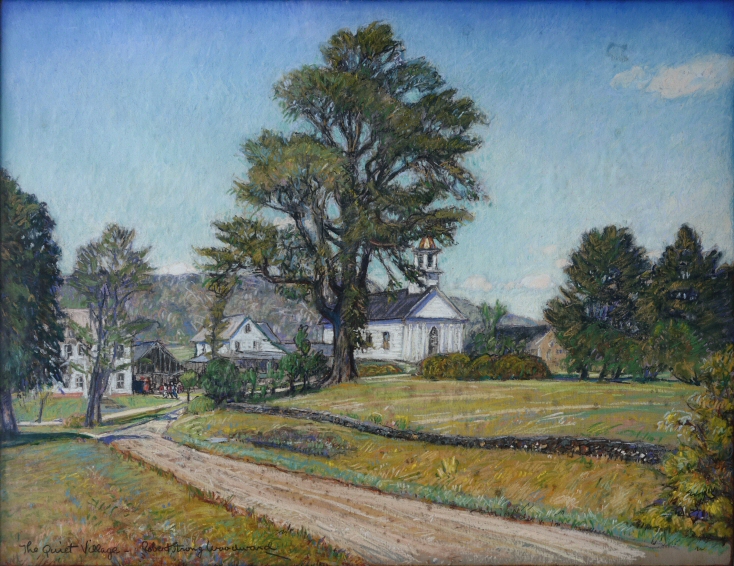 Villages Gallery to view related pieces.
Villages Gallery to view related pieces.
- See also the...
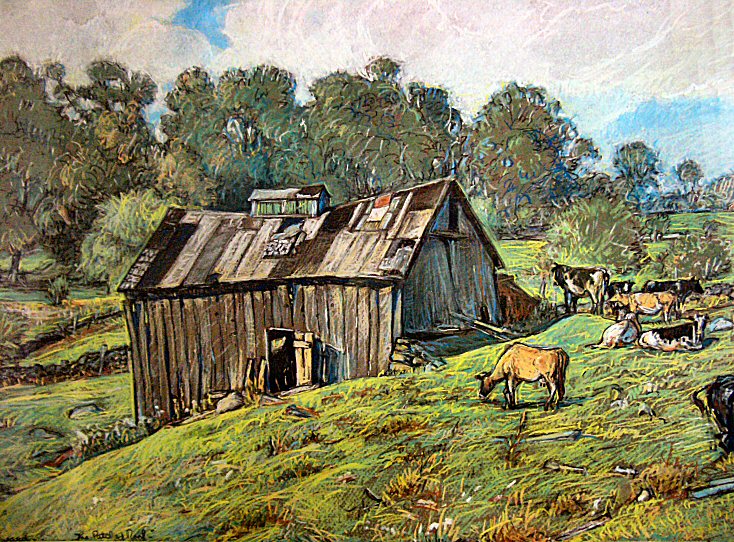 People & Livestock Gallery for related pieces.
People & Livestock Gallery for related pieces.
- See also the...
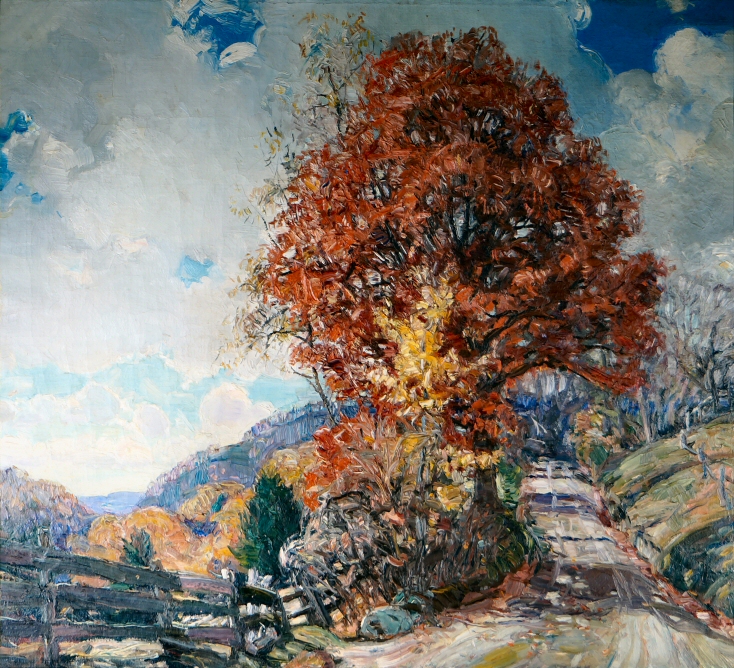 Burning Autumn Gallery to view related pieces.
Burning Autumn Gallery to view related pieces.
- See our page devoted to ...
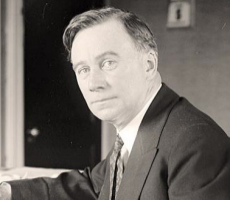 commission sponsor Francis Garvin
commission sponsor Francis Garvin
Featured Artwork: East Poultney Church
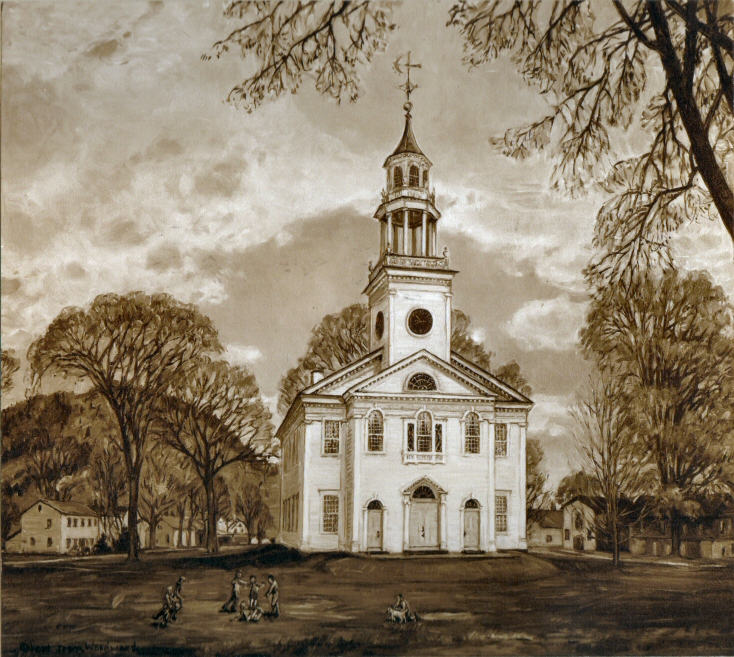
RSW's Diary Comments

Clipping of the East Poultney Church
after renovations from the NY Times
February 6, 1938
"Painted Oct. of 1937. Made as one of my church series for Mr. Garvan and intended for the Yale Museum. When in great pain went in Dorset, just to paint this picture, 25 miles away. Painted under tense difficulties. Horace Greeley from boyhood lived in East Poultney (in white house to the left of the canvas). And also his rival Mr. (George) Jones of the N.Y. Mr. Jones restored the church to its present condition."
Comments on the back of a sepia print:
"Late autumn landscape. Horace Greeley came from this town and the Jones family who owned at one time the New York Times, I believe. The Jones family recently restored this beautiful old church, just before I painted it. Church is white. Late autumn colors in background. Spire rises against cerulean blue sky with white clouds. Dull gold maple in right foreground. Grass strip soft yellowish green."
Excerpt from the New York Times, February 6, 1938:
"Reconstruction of the tower of the Baptist Meeting House of this historic village has been completed. The tower was dedicated in August as a memorial to George Jones, a native of East Poultney, who, with Henry T. Raymond, founded THE NEW YORK TIMES in 1851..."
From a note to RSW from F. Earl Williams- Rutland Vt. Summer of 1945 :
"East Poultney Church is interesting in its truly photographic technique but is not outstanding as to actual craftsmanship."
Additional Notes
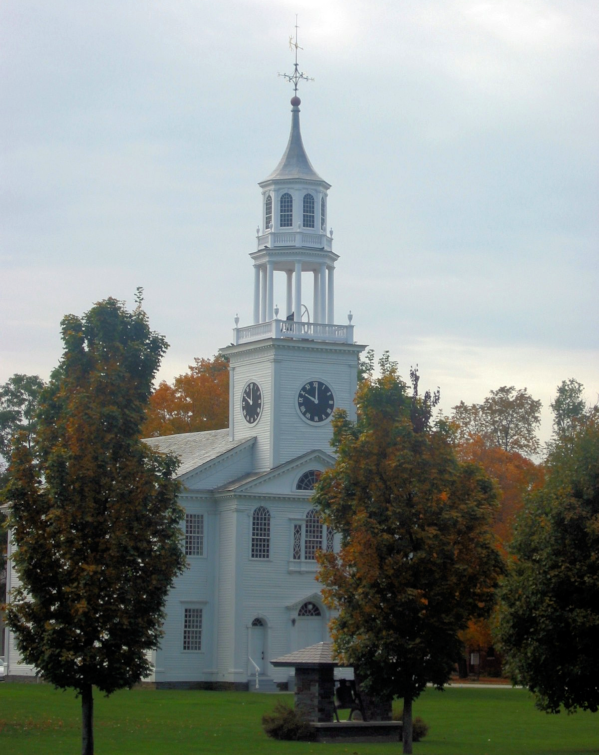
 East Poultney Church today
East Poultney Church today
For more information
about the historic
CLICK HERE
In 1930, Woodward painted the revolutionary-period village church and meeting house in Marlboro, VT and sent it to the
Macbeth Galleries in New York City catching the eye of Francis B. Garvin
who promptly bought it and presented it to Yale University's Museum of Fine Arts in New Haven, CT. The church would burn a
year later in 1931. We believe this was the impetus of the idea for Garvin to commission Woodward to immortalize in paint
historic and architecturally significant churches and homes. The collection was then to be given to Yale for prosperity.
This painting was one of those studies. The church, truely significant for its unique bell tower and its connection not only to George
Jones, the founder of the NYT, but Horace Greeley the founder of the New York Tribune, as well as the early founding of the
Republican party (he is often credited with naming the party) and was once a candidate for President of the United States.
Note Woodward states the difficulty he is having on the day he goes to paint the church. Under any other circumstance, he
probably would not have made the journey but this was an important commission and he was expected to deliver. The thing is,
Mr. Garvin passed before its completion. His widow then refuses to honor the commission leaving Woodward with a series of
paintings of studies he would not have normally pursued.

 Enduring New England, oil, 1930
Enduring New England, oil, 1930
Many see this as being about the church, overlooking
the totality of the scene... the road, the equally old
across the street, home next to it and in the distance,
as well as, the man crossing the yard. It is a village center.
In fact, aside from the Marlboro Church, which was most
likely more about the village center than the church itself, Woodward only painted the Mary Lyon Church in Buckland with regularity.
It that was more likely attributed to the high regard the local herion and pioneering educator than it is the church. Our point is that
outside the Mary Lyon Church, the Heath Village Center church, and the Marlboro village center church, Woodward did not paint
churches outside the Garvin commission parameters.
To this day people mistakenly associate the "New England
Church" with Woodward's brand but the facts do not support it. All village centers in New England have churches. There is
no escaping them in a scene of a village center. They are part of the whole landscape. To prove our point, the two churches (East
Poultney and the Bennington (VT) Church) painted without showing the village
center for this commission were never sold by Woodward.
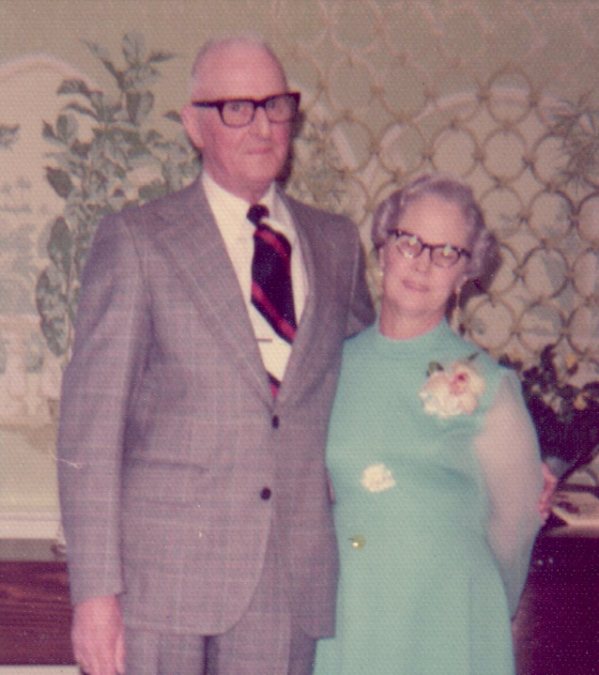
 Dr. Royal Meyers with wife Erma
Dr. Royal Meyers with wife Erma
Dr. Meyers was Dr. Mark's Surgical Instruc-
tor during his residency at Waterbury (CT)
Hospital. The two remained close friends.
This painting was not sold either. It was given as a gift of appreciation to Waterbury (CT) Hospital surgeon, Dr. Royal Meyers,
by Dr. Mark Purinton, the founder of this website and Woodward's
primary beneficiary. Dr. Meyers was Dr. Mark's preceptor and instructor in surgery during his surgical residency at Waterbury Hospital.
Woodward died in June of 1957 just as Dr. Mark was qualifying for his M.D. But he wanted to qualify in surgery as well so it required
him to serve an additional year as a surgical resident under the tutelage of Dr. Meyers. The two started a friendship and remained close.
Dr. Meyers even helped Dr. Mark secure a used x-ray machine from Waterbury Hospital for his small country practice which was very
rare for a rural practice to have such equipment. Dr. Mark kept up his surgery skills working at Greenfield Hospital on the weekends.
What has happened to the East Poultney Church painting is unknown. We have talked with the children of the Meyers and they are
unware of its whereabouts.

.png)
